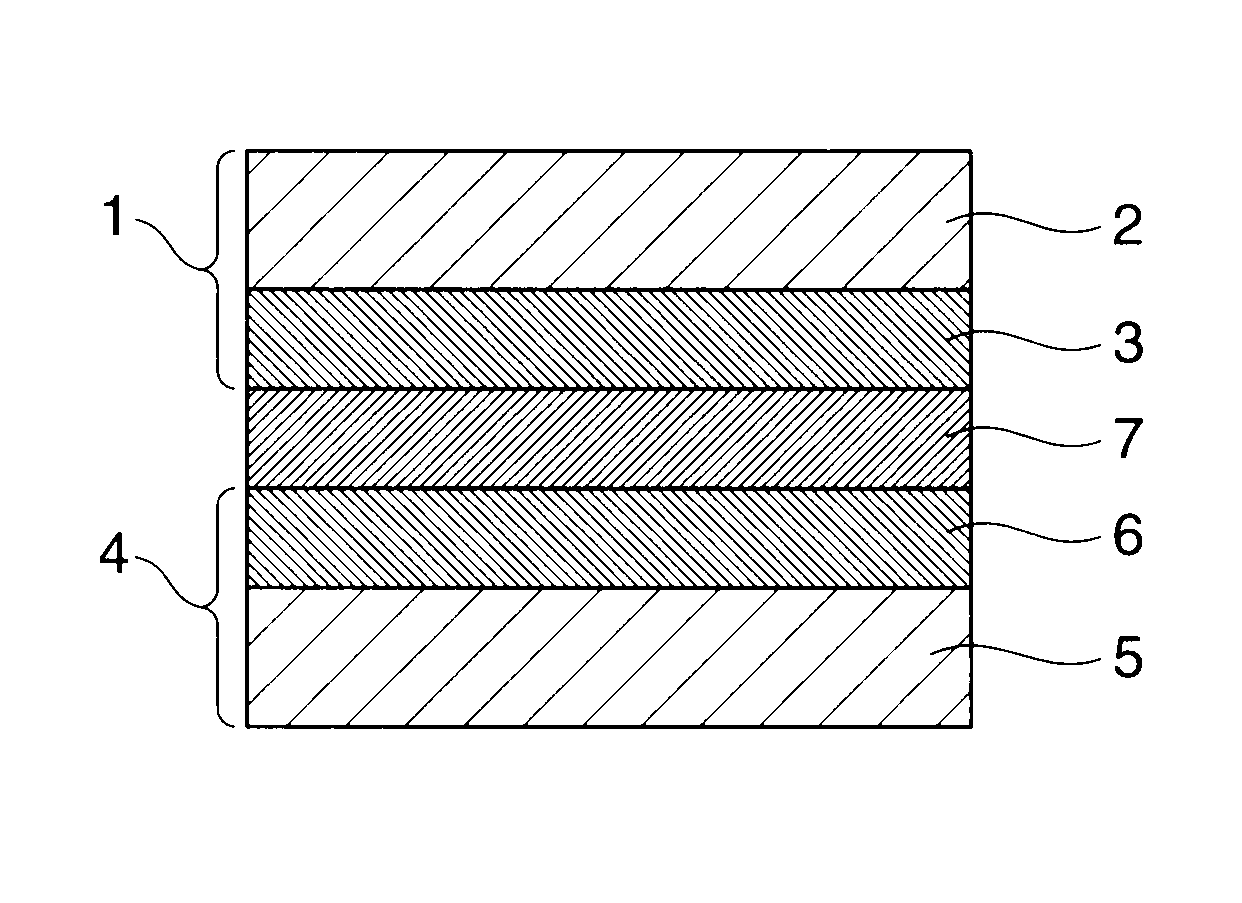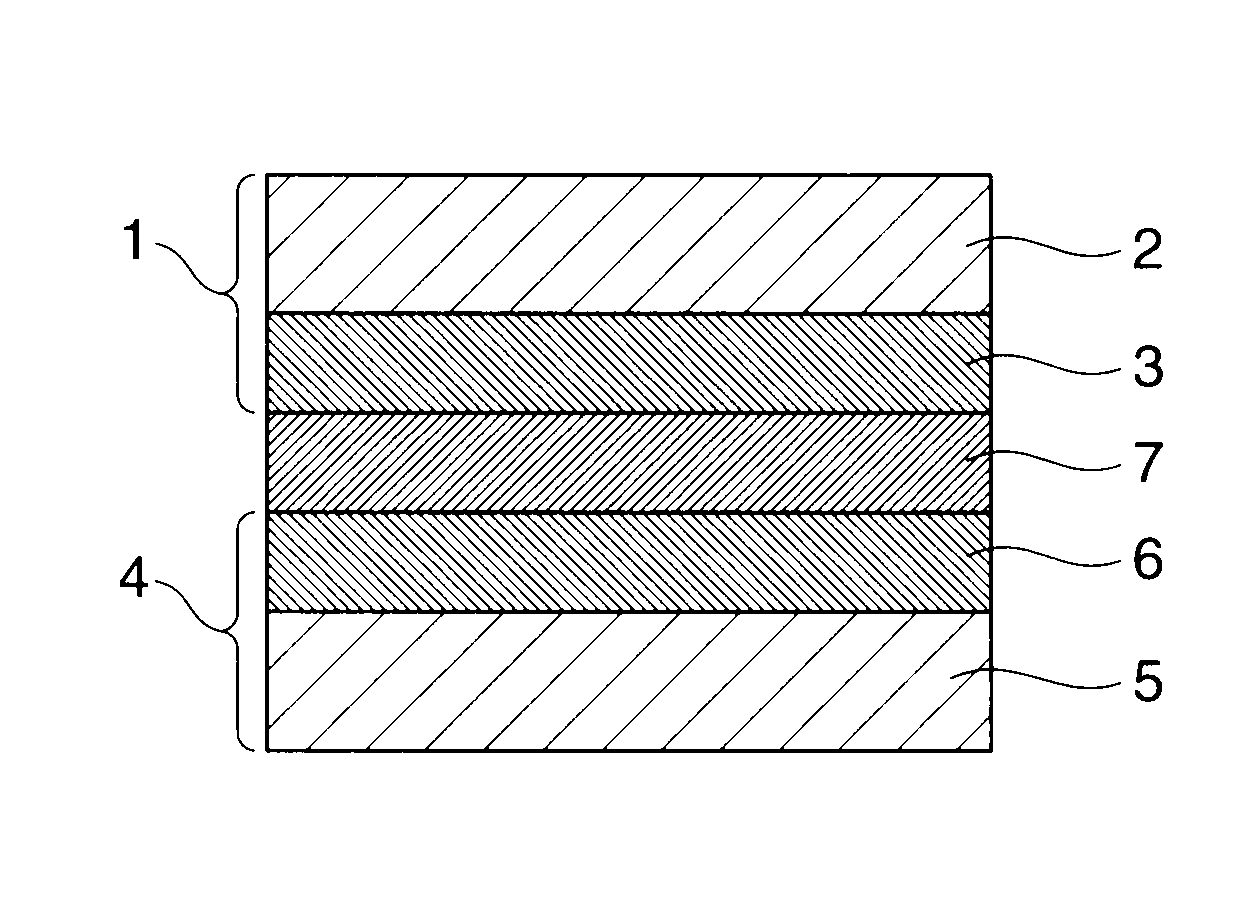Electrolyte membrane-electrode assembly for direct methanol fuel cell
a technology of methanol fuel cell and membrane electrode, which is applied in the direction of cell components, final product manufacturing, sustainable manufacturing/processing, etc., can solve the problems of difficult to increase the capacity of secondary batteries and lower utilization efficiency of methanol fuel, and achieve the effect of increasing the amount of power
- Summary
- Abstract
- Description
- Claims
- Application Information
AI Technical Summary
Benefits of technology
Problems solved by technology
Method used
Image
Examples
example 1
Membrane-Electrode Assembly of Radiation-Grafted Membrane and Two-Stage Supported Catalyst
[0080][Preparation of Radiation-Grafted Membrane]
[0081]Using a low voltage EB irradiation system (Light Beam L, Iwasaki Electric Co., Ltd.), an ethylene-tetrafluoroethylene copolymer membrane (ETFE membrane, Norton) dimensioned 5 cm×6 cm×25 μm (thick) was irradiated in a nitrogen atmosphere with electron beam in a dose of 2 kGy (accelerating voltage 100 kV). The EB-irradiated ETFE membrane was placed in a 25-mL test tube equipped with a three-way cock, which was charged with 7.8 g of styrene (St), 4.2 g of trimethoxysilylstyrene (MOSS), 0.003 g of azobisisobutyronitrile (AIBN), and 12 g of toluene. Nitrogen was bubbled into the test tube at room temperature for 1 hour, after which with the three-way cock closed, graft polymerization took place for 16 hours in an oil bath at 63° C. The graft factor was 22.7%.
[0082]Separately, 3 g of 2M HCl and 22 g of dimethylformamide (DMF) were mixed to form a...
example 2
Membrane-Electrode Assembly of Radiation-Grafted Membrane and 4-5 nm Particle Size PtRu Supported Catalyst
[0096]A radiation-grafted membrane was prepared as in Example 1.
[0097][Preparation of Anode Using PtRu / C Catalyst with a Particle Size of 4-5 nm]A catalyst paste was prepared by mixing 11.8 g of a 20 wt % Nafion solution (DuPont), 20 g of water, 5 g of PtRu / C having a particle size of 4 to 5 nm and a PtRu loading of 53% by weight (TEC61E54, Tanaka Kikinzoku) and 20 g of 2-propanol. The paste was applied onto water repellent treated carbon paper (TGP-H-060, Toray) using a wire bar, and dried at 60° C. for 1 hour in a circulating hot air oven, forming a catalyst layer for anode. While the amount of PtRu was controlled by changing the type of wire bar, electrodes having the catalyst layer with a PtRu loading of 1, 3 and 5 mg / cm2 were obtained. Electrodes with a PtRu loading of more than 5 mg / cm2 could not be prepared because the catalyst layer peeled off.
[0098]The cathode used here...
PUM
| Property | Measurement | Unit |
|---|---|---|
| particle size | aaaaa | aaaaa |
| particle size | aaaaa | aaaaa |
| particle size | aaaaa | aaaaa |
Abstract
Description
Claims
Application Information
 Login to View More
Login to View More - R&D
- Intellectual Property
- Life Sciences
- Materials
- Tech Scout
- Unparalleled Data Quality
- Higher Quality Content
- 60% Fewer Hallucinations
Browse by: Latest US Patents, China's latest patents, Technical Efficacy Thesaurus, Application Domain, Technology Topic, Popular Technical Reports.
© 2025 PatSnap. All rights reserved.Legal|Privacy policy|Modern Slavery Act Transparency Statement|Sitemap|About US| Contact US: help@patsnap.com


